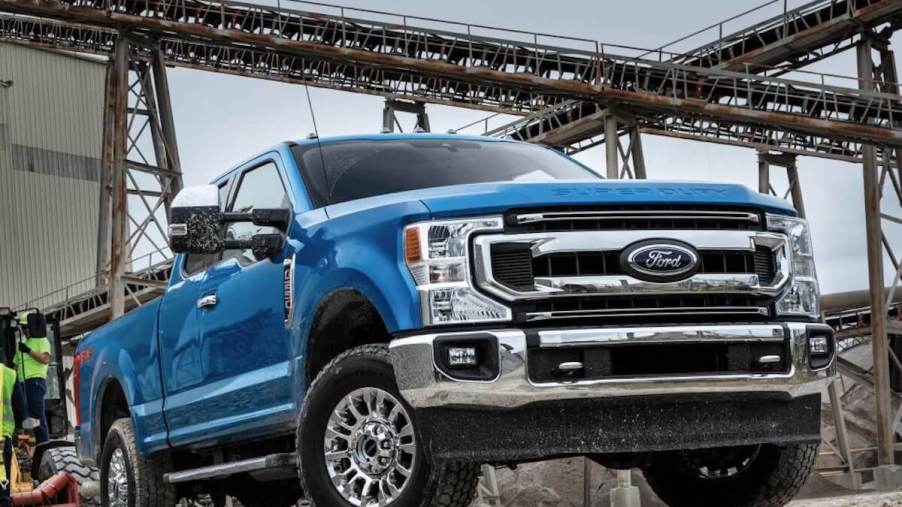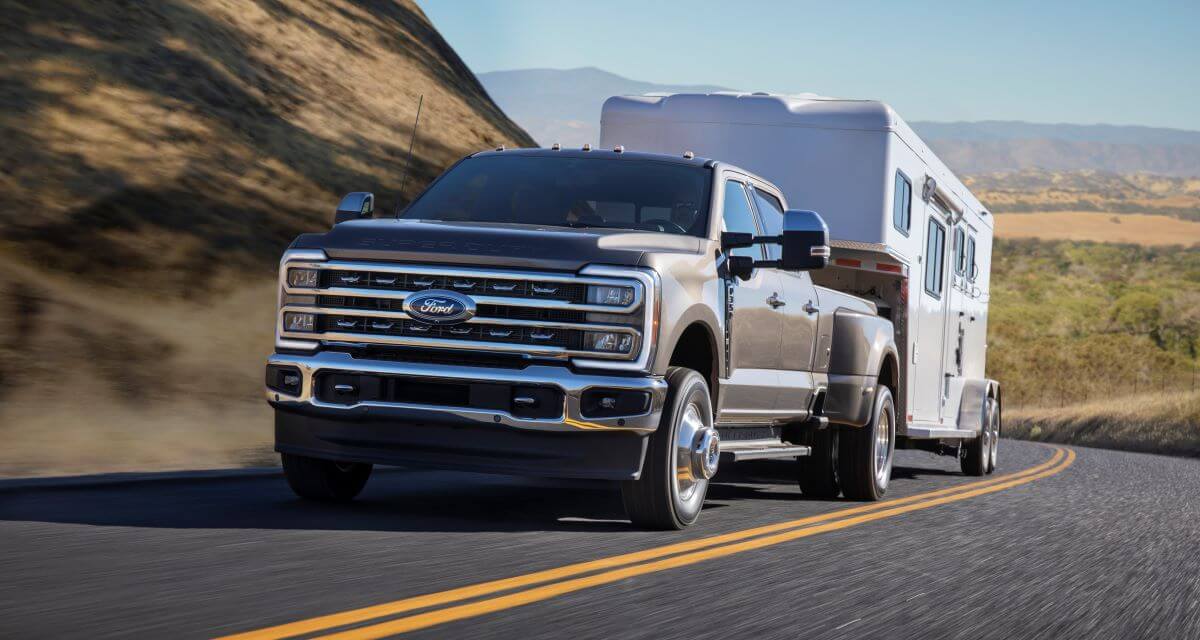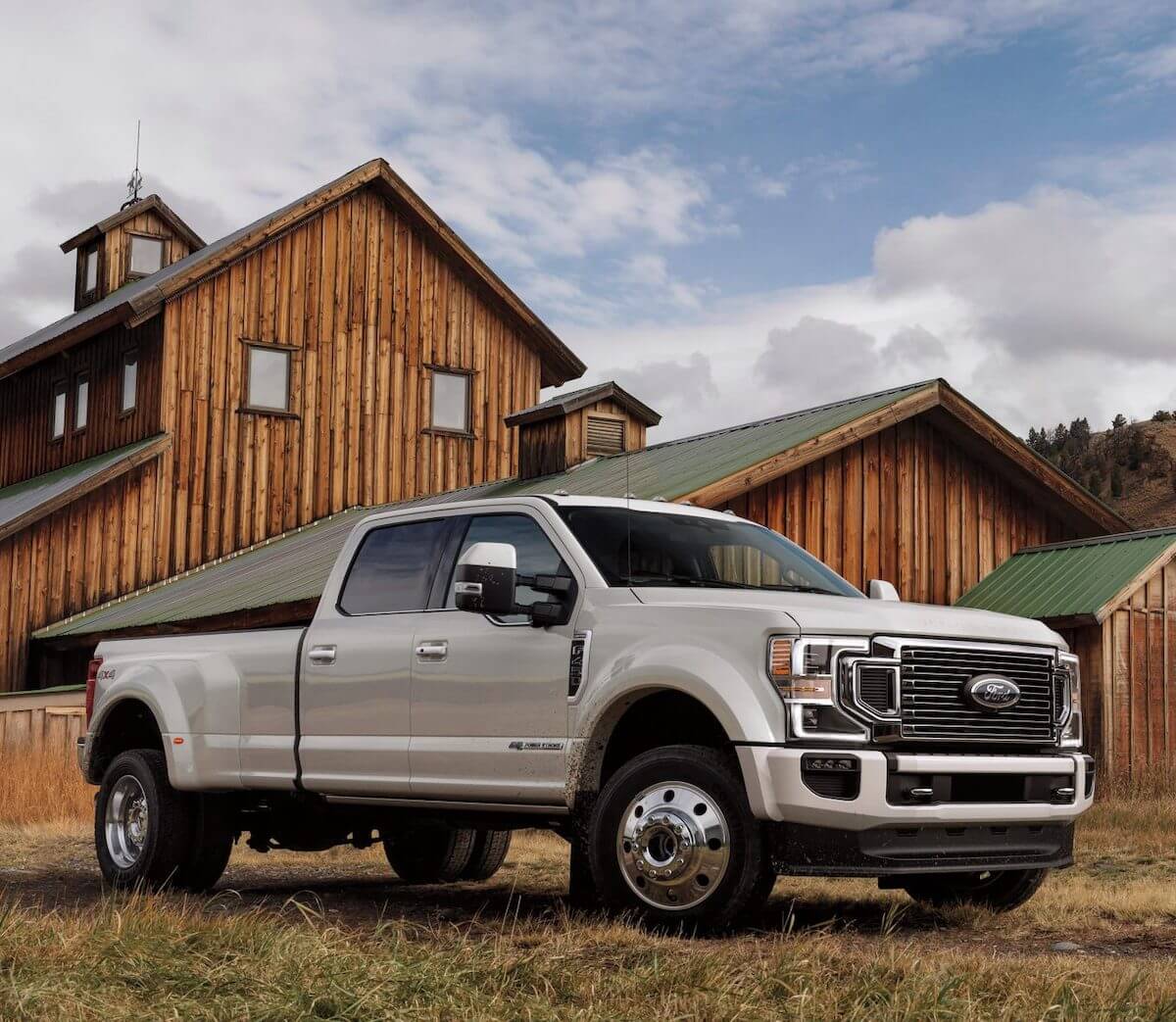
You Have to Remove the Entire Cab for This Ford 6.7 Power Stroke Repair
Ford F-Series Super Duty trucks with a 6.7 Power Stroke diesel engine are highly capable pickups. That means rugged exposure. In extreme situations, the oil pan is vulnerable. So replacing the upper or lower oil pan isn’t uncommon. But you won’t believe what it takes to remove the upper oil pan in specific 6.7-liter Power Stroke-equipped models.
How common are oil pan leaks in Power Stroke diesel engines?

If that’s your truck’s fate, the body must be removed to access the oil pan in 2020 to the latest 6.7 Power Stroke F-250 models. Ford has tried numerous methods to seal the upper pan, but nothing has prevented leaking. The first few years of 6.7 Power Stroke production use a pressed-in gasket that eventually leaks due to aging.
In 2017, Ford eliminated the gasket and used room-temperature-vulcanizing (RTV) silicone instead. Oil leaks seemed to increase with these 2017 to 2019 engines. But you could still remove those pans without the body-off mess. For 2020, the automaker began using a flat gasket combined with RTV, with still more leaks. That’s when removing the body reportedly became mandatory.
Which 6.7 Power Stroke oil pan requires removing the cab?
The lower oil pan is no problem, and many mechanics replace it with a zoomy cast pan for a visual diesel upgrade. For decades, technicians have complained about automakers not thinking about repairs when designing these trucks. The 6.7 Power Stroke problem is a perfect example.
Not to sound like a curmudgeon, but replacing an oil pan was not a big deal back in the day. Yeah, you might have to remove a cross member or lift an engine a few inches for access. But removing the entire body to get to an oil pan is ridiculous.
Why do 6.7 Power Stroke engines need pans removed?

So, why would you need to replace an oil pan in a 6.7 Power Stroke? Primarily, it would be because of damage or a leaking gasket. If the reason is catastrophic, like a spun bearing or worse, you would need to yank the engine. But replacing an oil pan for any of those reasons should not require this type of time-intensive repair.
The 6.7-liter Power Stroke V8 is a monster of an engine. It’s big and bulky. Regardless, it shouldn’t require lifting the cab off the frame to reach it.
Yeah, we get that real estate in the engine compartment and surrounding vicinity is limited. We’ve seen various reasons why removing the cab might be necessary. But they only indicate the situation being a band-aid for different production or component compromises.
Removing a truck cab is a big deal
Removing a cab doesn’t involve loosening only a few bolts and lifting it off. You must deal with linkages for the accelerator, brake lines, shift mechanisms, wire looms, and other parts. So after you remove the body and make the 6.7 Power Stroke repair, you need to reattach all of those functions.
Some Power Stroke fanboys will tell you that removing the cab is no big deal. But it’s a big deal. Watch this Flying Wrenches video to see for yourself. It pretty much kills any DIY dreams of fixing leaking engines without a full-service shop. Then it’s not a big deal, but who has access to a shop like that?
Editor’s note: Updated with model corrections



